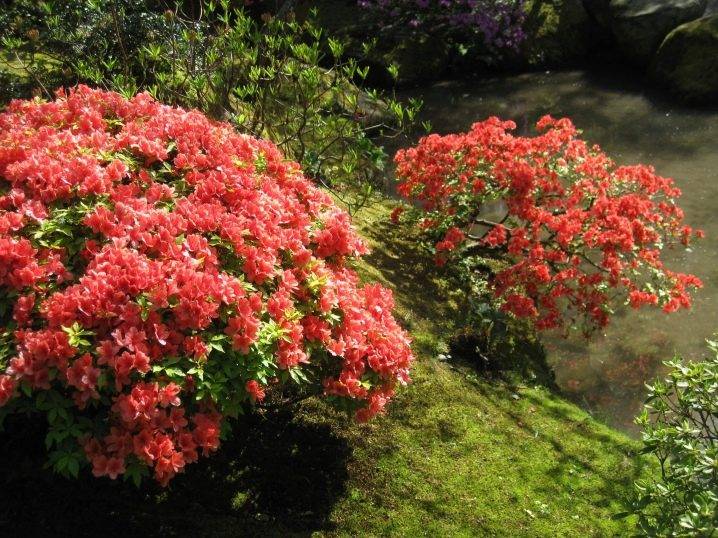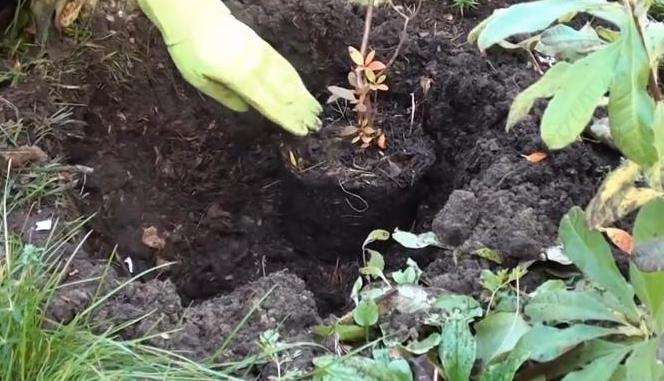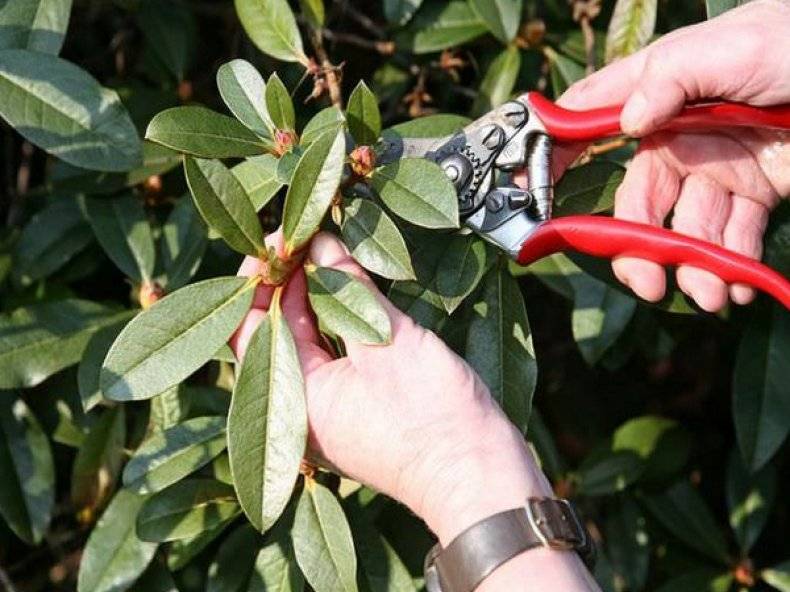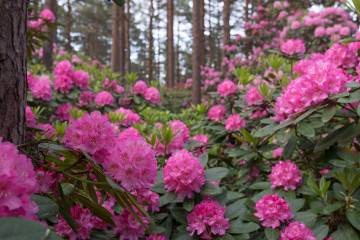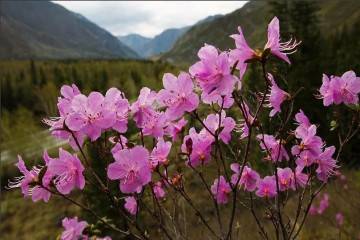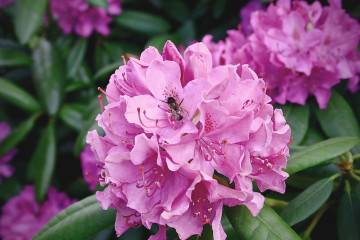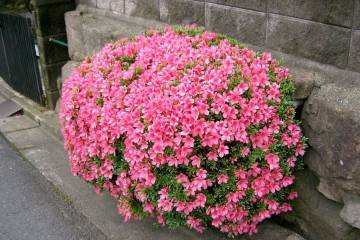Deciduous rhododendron: varieties, planting and care
Content:
- How to determine which subclass it belongs to
- Types and varieties of deciduous rhododendrons
- Seedling selection and preparation for planting
- Choosing a site for planting
- Preparation before planting deciduous rhododendron
- Preparing the soil for planting deciduous rhododendron
- The subtleties of planting a seedling plant
- Mulching and loosening
- Preparing for the winter and shelter for the winter
- Top dressing
- Autumn and spring pruning of rhododendron
The rhododendron came to Russia in the 18th century, and by the end of the 19th century, thanks to the efforts of the scientist botanist E. Regel, the popularity of this spectacular plant began to rapidly gain momentum. Really carried away by this Far Eastern culture, E. Regel, through selection, bred ten new varieties based on the Caucasian rhododendron, and then other varieties based on the Japanese one. Until the early 20's, this flower was used to decorate gardens and parks everywhere.
How to determine which subclass it belongs to
Today, this shrub of the heather family has more than a thousand subspecies and is widespread throughout the world. There are two types of rhododendrons - evergreen and deciduous. In fact, the difference between them is not so significant and lies in the fact that deciduous rhododendrons, unlike evergreens, are completely covered with flowers, and at the end of the season they first change the color of the leaves, and then partially shed them.
Types and varieties of deciduous rhododendrons
Varieties of deciduous rhododendrons are striking in their diversity. One of the most beloved and often grown among them is the Rosie Lights rhododendron. It is a North American variety belonging to the Light series of deciduous hybrids.
Some people think it is a Finnish hybrid, but it is not. Differs in incredibly abundant flowering and the ability to easily endure fairly severe frosts. With good care, it can reach a height of 1.5 m. The bush has a spreading branchy crown. Light green leaves are lanceolate, slightly concave inward. In the fall, they change color, becoming bright burgundy. Intense pink flowers with orange splashes of flowers are collected in inflorescences of 8 pcs. They appear from the end of May and bloom all summer. They have an incredible aroma.
Seedling selection and preparation for planting
What is the success of growing this stunning shrub? First of all, you need to choose a seedling and decide on a place for planting.
It is better to purchase planting material in a specialized store or in an agricultural company. The seedling must be strong, without signs of disease. The roots should not be wet and knotty. The optimal size of a bush for planting is from 15 to 25 cm, the average age is 2-3 years.
Choosing a site for planting
Central Russia (Leningrad region, Moscow region, Volga region, Ural, Siberia) - regions where this type of rhododendron can feel quite comfortable, despite the obvious severity of the climate.
For shrubs, a shaded area is preferable to an open, well-lit wasteland, so the western or eastern side of the site will be the best choice for it. Before planting, make sure that the groundwater is not too close to the surface and also take care of good drainage and drainage. If this is not done, then the roots of the rhododendron will not withstand waterlogging, and the plant will die.
Preparation before planting deciduous rhododendron
For this shrub, nutrient-rich soil is a very important factor. So that plants do not compete for them, you should be careful when choosing companions for rhododendron. Nature itself prompts a solution - pine, larch and other conifers will be the best neighbors for this plant.
Preparing the soil for planting deciduous rhododendron
The soil mixture for planting a rhododendron must have the following characteristics:
- The soil must be acidic.
- The composition can be prepared from the calculation of peat / garden soil / river sand (proportions 3: 2: 1).
- In order to avoid stagnation of moisture, the soil must be breathable.
The subtleties of planting a seedling plant
You need to dig a hole about 30 cm deep and 45 cm wide. At the bottom, you need to lay drainage from any suitable material - pebbles, broken shards, gravel of the middle fraction. Then install the plant in the prepared hole along with an earthen lump.
The root collar of the rhododendron should be flush with the ground. The soil should be tamped well, making sure there are no air cushions at the roots. Next, you need to shed the bush thoroughly. Moreover, if the soil has subsided, then you need to add the substrate to the required level.
Mulching and loosening
Mulching is an obligatory stage of planting a deciduous rhododendron seedling. Mulch can consist of the bark of coniferous trees, oak or birch. Just do not need to cover the root collar of the flower with it, so as not to cause it to rot. Regular loosening will also benefit the rhododendron, as it will allow the plant's root system to actively "breathe".
Preparing for the winter and shelter for the winter
Deciduous rhododendron is a hardy, non-sheltering variety. However, only the right preparation for wintering can guarantee a lush bloom with the arrival of the new season.
It should be checked whether new, so-called, growth buds have appeared. Their preservation until next season is the main task of the grower. For this, the shrub should be shaded, since the aggressive rays of the winter sun can cause significant damage to the kidneys.
Top dressing
You need to feed the deciduous rhododendron carefully. For this, fertilizers specially created for this type of plants are best suited. They are usually sold at a flower shop or agricultural supermarket. This will protect the gardener from mistakes, since each package or bottle has a clear description of how to proceed. As a rule, these are liquid fertilizers, which include potassium nitrate, ammonium, phosphates, magnesium.
It is possible, but with caution, to use organic matter in the form of rotted manure, horny or blood meal. Chlorine-containing fertilizers, bird and horse manure cannot be used to feed the rhododendron.
Autumn and spring pruning of rhododendron
Caring for a rhododendron means pruning it on time and competently. You should break out the faded inflorescences immediately after the end of flowering. This procedure is safe for the plant and will encourage the formation of new lateral buds.
Despite the fact that it is a frost-hardy shrub, you need to inspect the bush in the spring. And if frozen or dried stems are found, you need to get rid of them immediately.
Every gardener wants to have a garden to be proud of. The deciduous rhododendron, which is no easy task to plant and care for, is a plant that gives the garden a unique personality and charm.

